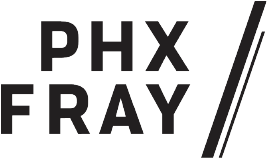Keeping Your Dog Active During Quarantine with At-Home Agility
With more time at home during quarantine, many Washingtonians have made the decision to adopt and foster dogs. Others who already had pets have been getting reacquainted with their four-legged friends while working from the dining room or home office. But while several months’ worth of extra snuggles and walks and treats are surely acceptable to our canine companions, they, too, are struggling to make sense of the change in routine brought on by the pandemic. For one thing, though extra attention is great, it doesn’t necessarily count as enrichment, and dogs, like people, need both physical and mental stimulation.
There are plenty of ways to enrich your dog’s (and your own!) daily schedule, including at-home agility. I know I for one had been looking forward to re-starting agility classes at Capital Dog Training Club this summer, but had to improvise. Getting started with agility, a sport for canines, is easy; all you really need is time, some high-value treats and a little imagination, and there’s no time like the present. And hell, if we ever get out of this thing, you’ll be ready to show off your pup’s new skills to friends, and maybe enroll in a beginner-level class. If you get really good, you could even think about going for the gold.
Here are a couple of basic tasks you can work on that would mimic those your dog would be expected to perform in a typical agility course.
Over/Under
Sure you’ve seen your dog jump onto the bed and slink under the fence, but that’s been on her own volition. The first step to getting her to leap high hurdles and army-crawl under posts is to guide her over or under barriers on command. This one is easy. All you need is a broom and two surfaces to rest either end of it on. Stacks of books are good as the balancing surfaces, because you can adjust the height.
For “over,” start with the broom on the ground. Using your high-value treats (like small pieces of cheese or hot dogs), lure your dog from in front of her to step over the broomstick repeating the word “over” as she steps. Give verbal praise, treat and repeat. Do this four to six times per practice set, then give your pup a break. An average of about five sets spaced out throughout the day is a good routine to start with.
Over the course of a few days as your pup gets the hang of it, gradually raise the bar (literally!). Prop the broomstick up a couple of inches off the ground for the next set of exercises, working your way up to a height of a foot or two (depending on your dog’s size). Tip: It’s helpful to have a carpet or non-slippery surface for the dog to land on once the barrier gets higher. Setting up outside in the grass is optimal but not necessary.
To go under, simply work in reverse. Begin with the broomstick propped high enough off the ground so that your dog can freely walk under it. Using the same technique as above, say the word “under” or phrase “go under” and gradually lower the bar of the course of your sessions until the dog is at a full crawl.
“Go Through”
Many of the stages in an agility course involve tunnels and other portals that the dog must go through. The best tool for practicing this at home is a hula-hoop. Begin by positioning your dog in a “sit” in front of the hula-hoop as you balance it upright with one hand on the top of it. To start, the bottom of the hoop should be on the ground so that the dog needs only to step over the rim. With a high-value treat in your free hand, lure the dog through the hoop’s circle and say “go through.”
Give praise and repeat using the same process as in the over/under tasks, with a series of short sessions to get the dog comfortable going back and forth through the hoop. As she does, start to hold the hoop up off of the ground, gradually increasing the distance between the floor and the bottom of the hoop. Eventually, the “go through” will involve a leap.
Worried About Your Dog’s Age?
The adage that you can’t teach an old dog new tricks is not necessarily true. Older dogs are perfectly capable of learning new things, if they have learned how to learn. If an older dog hasn’t been shown how to follow instructions it can be harder for them to grasp the concept, but it doesn’t mean they can’t. And learning new things is good for keeping senior canine minds sharp, just as it is for aging humans.
When we’re talking about agility, it is important to pay attention to physical limitations your older dog may have. Be careful not to encourage tasks that might exacerbate arthritis or joint pain or make your dog feel unsteady and thus scared.
For a less physically intensive but still stimulating activity, consider the path to certifying your pup as a Canine Good Citizen (CGC). Some of the basic concepts involved in becoming a CGC — like attention, obedience and body awareness — are great building blocks for more complex agility moves. Here are some other great tips for at-home agility practice, and the internet is, of course, abound with information.

